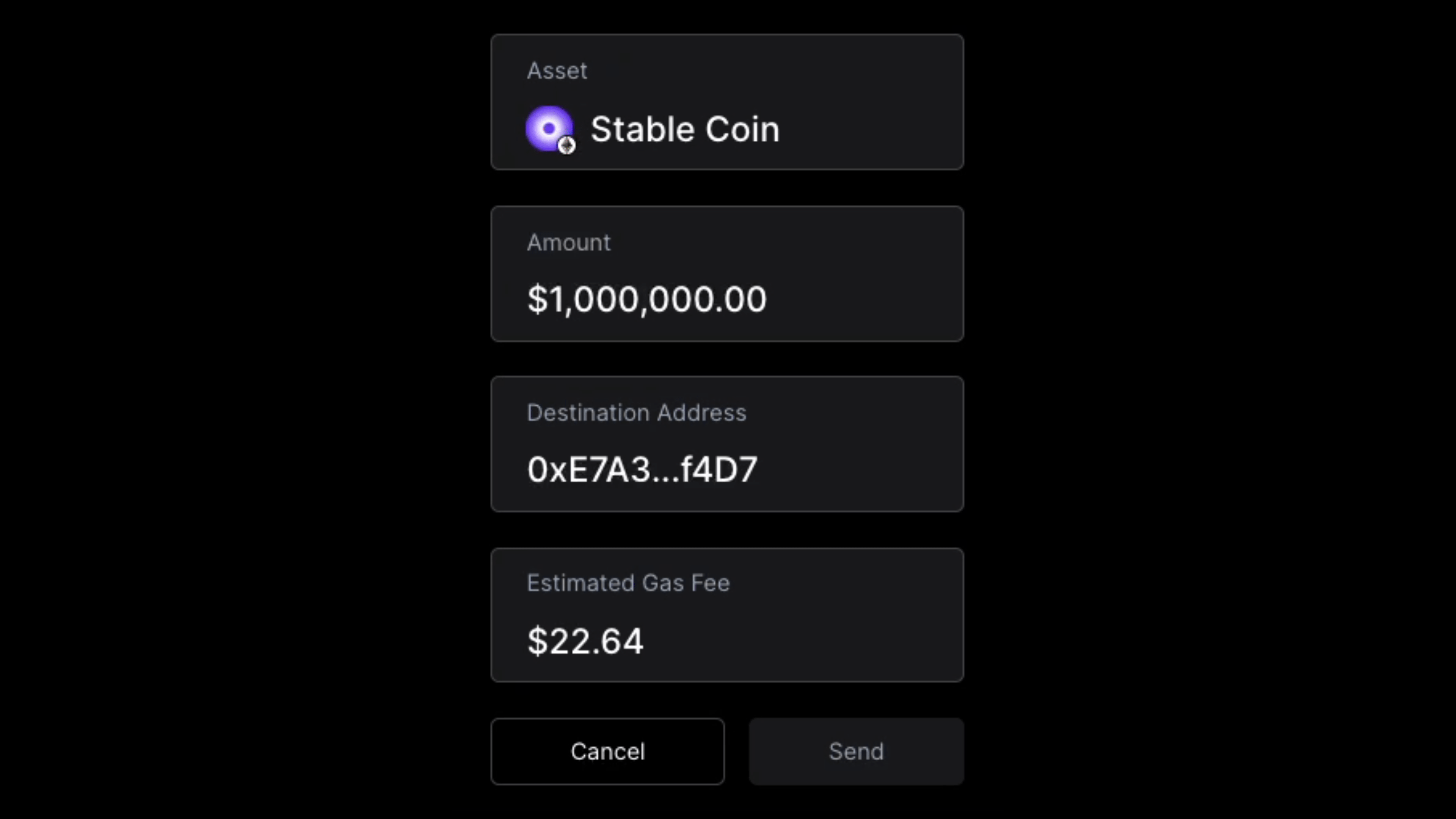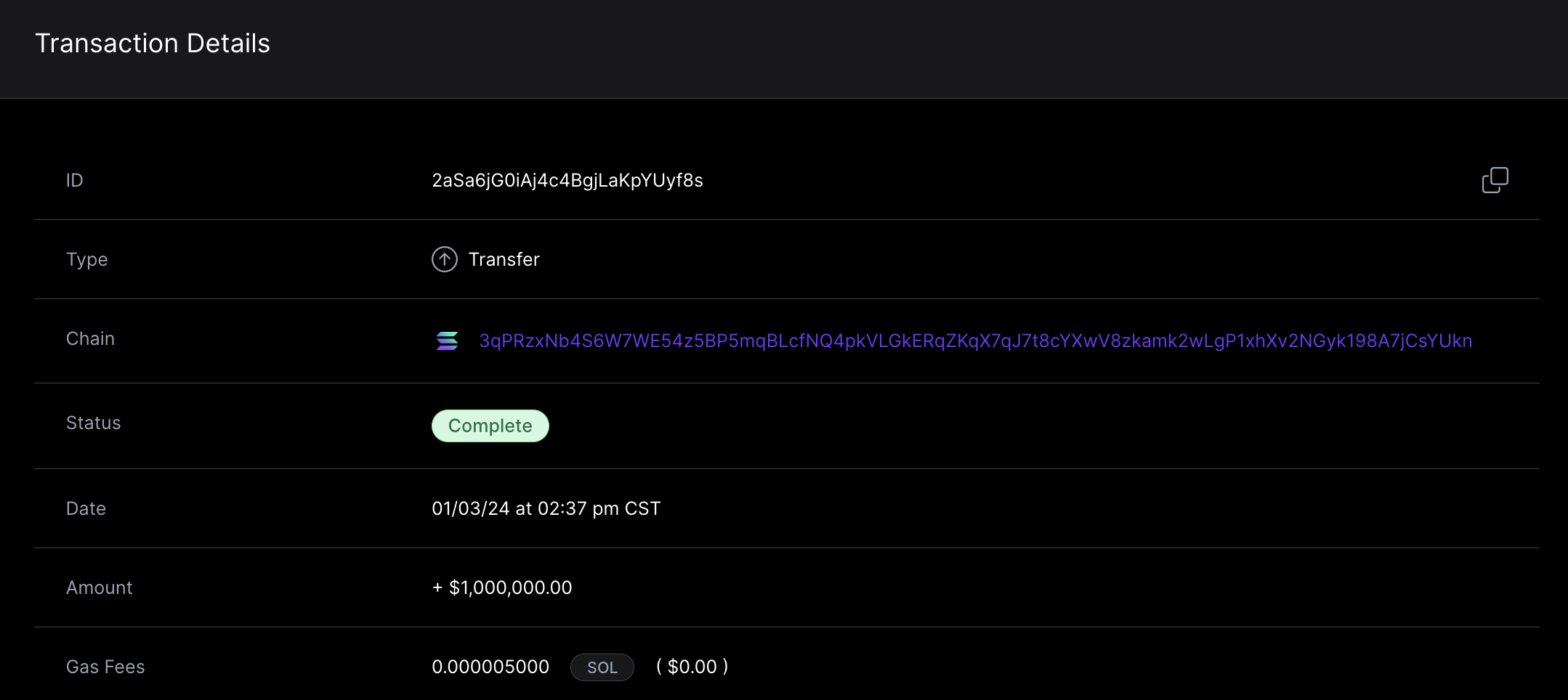Costs to transfer $1M on-chain
We've had the opportunity to learn about the costs of using many blockchains for payments based on real-world usage, and some recent discussions inspired us to do more testing. The new Estimated Gas Cost in the Brale UI prompted the discussion.

Like the above, a comparison of transaction costs was recently shared on LinkedIn, and several good questions popped up, so we decided to bring some more information together here.
Below, you'll see the estimated and actual costs of the transactions to test. To test, we engaged in several $1,000,000 on-chain transactions to demonstrate the actual fees to move $1 million. You'll notice some extreme outliers like Solana. You'll see two transactions associated with each transfer on EVM chains. This allows Brale to pay all gas fees on a client's behalf so they don't have to manage gas tokens. The first transaction is a Permit to support paying the gas fee, and the second is a Transfer From.
Transferring $1M SBC on Solana costs $0.0005. We highlight $0.00 here because this can be a challenge depending on your organization, which may not have accounting tools below two decimals.

Blockchain payments compared to traditional payment methods
We've found that fees on all chains are competitive with traditional payment methods, while blockchains also benefit from 24/7 operations, global access, and composabability with on-chain protocols. For large amounts, even transactions on Ethereum are comparable to wire transfers but can settle anywhere in the world within a few minutes.
It's worth noting that cost is not the only metric to compare blockchains, and we have found in conversations that businesses are working to utilize stablecoin payments on many chains, including Ethereum L2s (Base, Optimism), alternative Layer 1s (Solana, Avalanche, Stellar), and their own app-specific chains.
Ultimately, we are finding that the costs of using many blockchains are low enough to subsidize fees with the treasury economics of a stablecoin program.
Gas Station
Brale manages gas fees across all chains, so there's no need to worry about acquiring gas tokens, topping up wallets, and tracking fluctuating prices. Instead, we manage all the gas fee funding accounts and roll up all gas fees into one monthly charge.
We'd love to hear your feedback on these observations and what blockchains you're considering for payments.
Acknowledgements
Special thanks to Jesse Pollak from the Base team for feedback which resulted in updates to the content. We're proud to be building on Base and grateful for the opportunity to improve not only ourselves, but education in the community. Jesse also called out an important potential improvement in EIP4844 which will result in substantial additional future savings.

